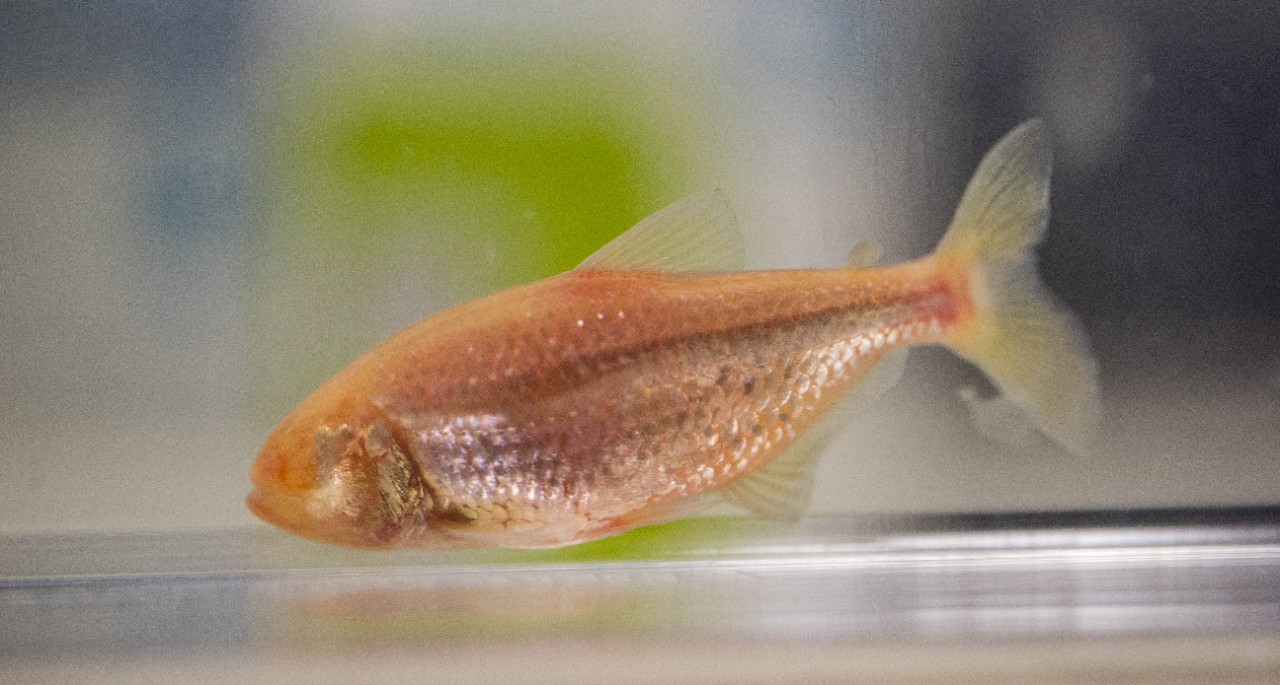
Blind cavefish have extraordinary taste buds
Cavefish increase the number and location of taste buds — to the head and chin, say UC biologists
Over thousands of years, cavefish evolved and lost their vision, earning the moniker “the blind cavefish,” but some cavefish also developed an inordinate number of taste buds on the head and chin.
In a new study, now published in the Nature journal Communications Biology, scientists at the University of Cincinnati have determined when the taste buds start to appear in areas beyond the oral cavity. The study was supported by the National Science Foundation.
To begin, blind cavefish evolved in cave ponds in northeastern Mexico. They are pale pink and nearly translucent compared to their silvery counterparts that live in surface rivers and streams. While cavefish have the faintest outline of eye sockets, the surface fish have enormous round eyes that give them a perpetually surprised expression.
Despite the many obvious physical differences, the two fish are considered the same species.

Professor Joshua Gross peers through a microscope in his biology lab. Photo/Andrew Higley/UC Creative + Brand
“Regression, such as the loss of eyesight and pigmentation, is a well-studied phenomenon, but the biological bases of constructive features are less well understood,” says the article’s senior author UC professor and biologist Joshua Gross, whose laboratory is dedicated to the study of evolution and development of cave-dwelling vertebrates.
“Knowing just how many doors this opened for future research involving taste bud and taste development was a truly rewarding aspect of this research; especially considering how long these fish live,” says co-author Daniel Berning who earned his master’s degree in biology at UC in 2022, while working on the study in Dr. Gross’ lab.
Cavefish have a keener sense of taste.
Joshua Gross Professor of biology
Although scientists in the 1960s discovered that certain populations of blind cavefish had extra taste buds — on the head and chin — there was no further study of the developmental or genetic processes that explain this unusual trait, says Gross.
To determine when the extra taste buds appear, Gross and his research team looked at the species Astyanax mexicanus, including two separate cavefish populations that dwell in the Pachón and Tinaja caves in northwestern Mexico, known to have the additional taste buds.
The research team found that the number of taste buds is similar to the surface fish from birth through 5 months of age. The taste buds then start to increase in number and appear on the head and chin in smatterings, well into adulthood, at approximately 18 months.

Blind cavefish. Photo by Andrew Higley/UC Marketing + Brand.
Cavefish can live much longer than 18 months in nature and captivity, and the authors suspect even more taste buds continually accumulate as the fish get older.
The increase correlates with the time that the cavefish stop eating other live foods for sustenance and start to pursue other food sources, Gross says, such as bat guano. Equally fascinating, he says, is that the expansion may occur in other cave locations where there are no bat populations.
With more taste buds, he says, the cavefish have a keener sense of taste, “which is likely an adaptive trait.”
“It remains unclear what is the precise functional and adaptive relevance of this augmented taste system,” says Gross, which has led the team to begin new studies that focus on taste, by exposing the fish to different flavors such as sour, sweet and bitter.
Read more about Dr. Gross' cavefish studies on the UC website:
"How blind cavefish survive a low-oxygen environment."
"How do blind cavefish find their way?"
Featured image at top of cavefish by Andrew Higley/UC Marketing + Brand.
Impact Lives Here
The University of Cincinnati is leading public urban universities into a new era of innovation and impact. Our faculty, staff and students are saving lives, changing outcomes and bending the future in our city's direction. Next Lives Here.
Related Stories
Blind cavefish have extraordinary taste buds
August 15, 2024
UC biologist Josh Gross studies blind cavefish, a species of fish that dwell in cave ponds in Mexico. In a study, supported by the National Science Foundation, Gross looked at the timeline for when the cavefish develop additional taste buds on the head and chin, finding the taste bud expansion starts at five months and continues into adulthood.
How to give a hippo an ultrasound
May 26, 2022
University of Cincinnati master's student Julie Barnes works as a veterinarian at the Cincinnati Zoo & Botanical Garden where she recently performed an ultrasound on a hippo.
Museum highlights UC’s student research opportunities
January 17, 2023
A local museum is highlighting a summer research program at the University of Cincinnati that invites students from across the country to the UC campus to work with faculty on sensory ecology projects.
